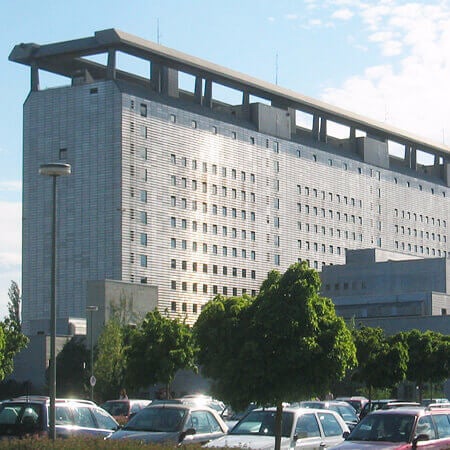About the disease
Lower extremity arterial disease, also known as peripheral artery disease, causes arteries that supply blood to the legs to become narrow and thickened. Having an insufficient supply of blood to the legs can cause damage to their nerves and tissue over time. Most commonly, lower extremity arterial disease develops when the arteries have become hardened and stiff due to plaques or clots that have started to accumulate in the arteries. This restricts the flow of blood, meaning that the legs are deprived of oxygen that is carried in the red blood cells. As the disease progresses, it becomes increasingly difficult to walk and stand for long periods of time. The sufferer becomes fatigued after even slight exertion and feels pain in the legs while exercising.
Lower extremity arterial disease is most common in diabetics and people with increased levels of cholesterol in the blood (which can lead to clogged arteries). 90% of people with this disease suffer from high cholesterol. People with a long history of high blood pressure, smokers and men over 55 years of age are also at risk of developing lower extremity arterial disease. Since this disease develops very gradually, symptoms might only appear after several years.
Symptoms
- Pain in the legs
- Fatigue
- Cramps
- Tingling in the legs
- Insomnia
- Sores
- Skin changes
Diagnosis
- During a general examination, the doctor may use a stethoscope to listen to the blood flowing through the leg arteries. Hearing a whooshing sound in them is the first indicator that there may be abnormalities in the blood flow.
- Angiography is a special imaging technique that produces an image of the arteries so that the doctor can see where the leg is affected.
- An X-ray of the leg can show if lower extremity arterial disease has affected the bones and limbs.
Treatment
- Shunting and thromboendarterectomy is a surgical procedure whereby the arteries are opened up so that fatty deposits can be removed and special shunts that keep the artery open can be implanted.
- Amputation is resorted to only in progressed cases of lower extremity arterial disease. For example, if it is impossible to restore blood flow to the leg, or if there is an increased risk of infection, the leg will be removed to save the patient’s life.
- If, following major surgery, there are areas of the leg where skin tissue has died, necrosis will be removed and skin will be grafted from healthy areas of the patient’s body.
Percutaneous transluminal angioplasty with stenting is a surgical procedure that uses special balloons to inflate a damaged artery to its normal size and is then kept this size by one or two stents.
Authors: Dr. Nadezhda Ivanisova, Dr. Sergey Pashchenko




















